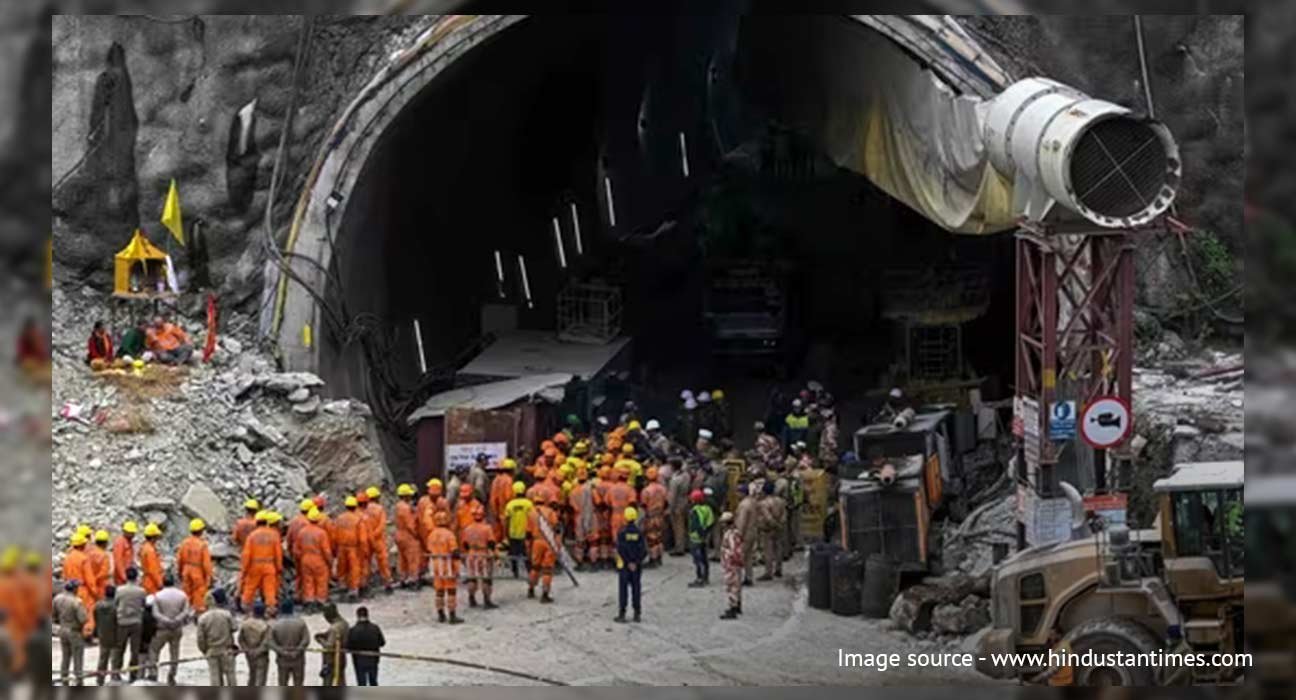In a recent rescue operation that captivated the nation, 41 miners were successfully rescued from a collapsed tunnel in Uttrakhand. The spotlight not only illuminated the physical challenges of the operation, but also the workings of the human mind during the time of crisis. The article delves into exploring the emotional roller coaster that was experienced by trapped workers and the rescue teams.
41 Indian workers trapped in a tunnel on 12th November. They were rescued after being trapped for more than 2 weeks. The workers were trapped in the tunnel due to a landslide. They were freed after a rescue operation which encountered many obstacles. From the video recently released, workers are in the hospital beds, they appear to be in good spirits.
Rescue mission: An act of Prosocial Behaviour
The psychology behind ‘rescuing’ delves down the motivations, decision-making processes, and psychological reactions of people who take on the role to rescue in an emergency situation. The act of ‘rescue’ can be said to be an act of prosocial behavior. Prosocial behavior is seen when people act to benefit others rather than themselves. It originates from an innate concern and welfare of others. They have the ability to put forward another’s needs before theirs. During a crisis or emergency, the rescue team showcases this prosocial behavior as they work to act upon-helping those stuck in the tunnel. They work for endless hours planning for action, drilling till they finally save the helpless.
Also Read: Lost elderly woman suffering from mental illness rescued in Mumbai
Research has shown that those who exhibit prosocial behavior are happier, healthier and live longer. Those who engage in prosocial behaviour also are likely to experience better moods. Research has also found that helping others is one of the greatest ways to reduce the impact of stress in your life.
Altruism
Altruism is a selfless act of helping another individual, without expecting anything in return from them. The people part of the rescue team dedicate themselves to aid others in distress. Workers are driven by their innate altruism, a genuine desire to help others selflessly. Rescuers feel a profound sense of duty and responsibility to protect and assist those in danger. Rescuers have the ability to empathize, understand and share the feelings of others. They empathize with those who are suffering, driving them to take immediate action. Empathy cultivates and encourages altruism in a person. When a person with high altruism witnesses others in distress, they often feel compelled to help due to an emotional response that is triggered by the perception of vulnerability in the victims.
Altruistic behavior plays a huge role in fulfilling the human need for social validation, that positively impacts social esteem. Altruistic acts allow individuals to demonstrate their moral character, and helps foster social bonding and strengthening of social relationships. It also reduces feelings of loneliness and isolation. Along with that, altruistic behavior contributes to personal well-being. It serves individuals with a sense of purpose and meaning in life. It has the potential to drive ‘social change’ and promote an equitable society for everyone.
The Power of Resilience
Crisis:
After the landslide, a number of rescue workers that, were equipped with ropes, ladders and, stretchers entered the tunnel. The initial phase of the rescue operation was marked by anticipation and anxiety. Families of those who were trapped, waited for any news on the fate of the trapped miners. There was a tense atmosphere, having thoughts and fears of the worst that could happen.
Problem-solving:
From 17-20th November, rescuers started drilling halts. A machine was flown down. The rescuers drilled vertically from the top of the mountain under which the men were trapped to bore an alternate rescue passage. The idea employed in this rescue strategy showcases remarkable problem-solving skills. The shift in the approach reflects adaptability, innovation and, a capacity to think creatively in the face of challenges. The thought behind having a machine flown vertically down to the site showcases innovative solutions to a complex problem. The thought behind the plan demonstrates the ability to think outside the box. They also considered utilising the available resources to create an effective strategy to deal with the problem.
Also Read: The Dangerous Reality of the Dark Web
An essential component of a rescue mission is the decision-making processes. Rescuers engage in risk assessment, where they weigh out the potential dangers against the urgency of the situation. They carefully evaluate the possible outcomes, and co-ordinate with their rescue team. For a strategic approach to the mission, communication and collaboration are essential, as we can notice in this scenario.
Persistence and Cultivating hope
On 21st November, the first visuals of trapped workers were seen. Satya Dev, one of the trapped men, said that it was very claustrophobic inside the tunnel. Being trapped inside for more than 2 weeks must have been a very challenging time to survive. Although, the use of mobile phones for communication and entertainment enlightened them with some hope. The worker’s ability to stay positive by engaging in activities like games, walking, practicing yoga, having meals together, reflect the human capacity to endure and find solace during dire situations. The miners used tools to dig manually to break through the last few meters.
Finally, on 29th November, after weeks filled with anticipation, authorities announced that there had been a breakthrough in the rescue operations. The trapped men were excited, and started clapping and shouting. The successful rescue of these 41 men was a journey that highlights the resilience and determination of both the workers and rescue teams.
How to cultivate Prosocial Behaviour?
Modeling:
Parents, caregivers and teachers can cultivate prosocial behavior in children by modeling. This can be done through activities like reading together a book that teaches good moral values, doing chores together and role-playing. Creating a “Kindness jar” at home, where members of the family can write down acts of kindness that they have witnessed or experienced.
Also Read: Understanding Defensive Behavior and Self-image
Conflict-resolution role-playing:
As a parent, you can engage in role-playing scenarios that involve conflicts. Guide the child to find peaceful and empathetic solutions to the problems presented.
Teaching empathy: Reading or telling stories that evoke many emotions, and pausing to discuss the character’s feelings. Asking questions like “How do you think the character feels in this situation?”. This may encourage the child to think critically and emotionally connect by putting himself in the shoes of another.
Feelings Journal: Maintaining a journal, where you jot down your emotions, or observations about others’ emotions can help you develop emotional awareness and regulation of your’s and others. This activity can cultivate emotional intelligence, which is profoundly in people who showcase prosocial behaviour.













Leave feedback about this